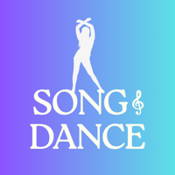
Overview
Synopsis
Song and Dance is a two-act musical by Andrew Lloyd Webber that combines two distinct forms: the first act is sung-through and the second act is danced. Act One, titled Tell Me on a Sunday, follows Emma, a young English woman who moves to America in search of love and adventure. Through a series of solo songs, Emma writes letters home to her mother, narrating her experiences as she drifts through relationships in New York and California. Despite her optimism and determination, her romances with various men leave her disillusioned, forcing her to confront the gap between her dreams and reality.
Act Two shifts dramatically in style. Instead of words, the story unfolds entirely through dance. Subtitled Variations, this act tells the story of a relationship between a man and a woman—often interpreted as Emma and one of her lovers—from the man’s perspective. Using dance as the expressive medium, it explores love, conflict, passion, and heartbreak in a way that complements and contrasts Emma’s sung experiences from Act One. The choreography, originally created by Anthony Van Laast, provides a physical counterpoint to the emotional narrative heard earlier.
Together, the two acts present a layered exploration of romance and self-discovery, blending words, music, and movement into a hybrid theatrical form. The innovative structure highlights how different artistic languages—song and dance—can tell parallel stories about the complexities of love. Though unconventional, Song and Dance showcases Lloyd Webber’s versatility, combining the lyrical intimacy of a solo song cycle with the dynamism of a ballet, making it a distinctive entry in his body of work.
Show Information
Context
The origins of Song and Dance lie in two separate works by Andrew Lloyd Webber. Act One began as Tell Me on a Sunday, a song cycle with lyrics by Don Black, first broadcast on British television in 1980 and later released as a recording starring Marti Webb. It told the story of an English woman navigating love in New York and Hollywood, with a contemporary pop-jazz score. Act Two came from Variations, an instrumental piece composed by Lloyd Webber
to read the context for Song and Dance and to unlock other amazing theatre resources!Plot
Characters
| Name | Part Size | Gender | Vocal Part |
|---|---|---|---|
|
Lead |
Female |
Soprano |
|
|
Ensemble |
Either Gender |
|
Songs
Act One
A song with an asterisk (*) before the title indicates a dance number.
Monologues
Scenes
Key Terms
A ballad is a song style that tells a story through simple, lyrical verses and a steady rhythm. In theatre, ballads are often slow and emotional, allowing characters to reveal deep feelings or reflect on personal journeys. They can be used to highlight romance, longing, or moments of dramatic intensity.
A classical dance form used in theatre for expressive movement, storytelling, and interdisciplinary performance.
A powerful, resonant singing technique used in musical theatre to project high notes with chest voice.
A vocal technique blending chest and head voice to create a strong yet flexible sound for higher pitches.
The art of designing and arranging movement sequences for theatrical dance and physical storytelling.
A series of songs that are thematically or narratively connected, often forming the structure of a sung-through musical.
A sentimental ballad about unrequited love, often featured in musicals or cabaret performances.
Videos
Quizzes
Themes, Symbols & Motifs
THEMES
Love and Disillusionment
At its
to read about the themes, symbols and motifs from Song and Dance and to unlock other amazing theatre resources!Quote Analysis
Sorry! We do not currently have learning modules for this guide.
